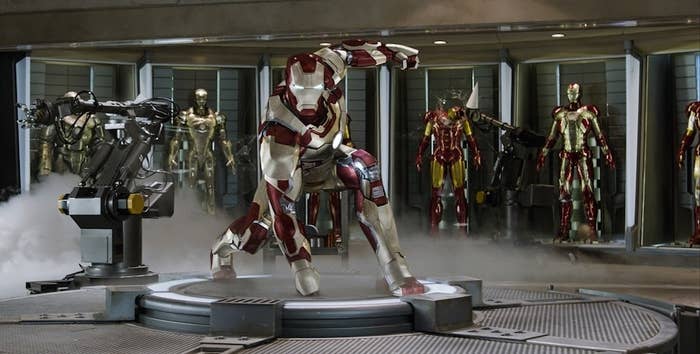
Tony Stark is fond of saying "I am Iron Man," but the Iron Man movies would just be about a really witty billionaire genius playboy philanthropist if it wasn't for the Iron Man suits. The suits Robert Downey Jr. and Don Cheadle wear throughout the film — the Mark 42 and the Iron Patriot, respectively — were physically made by longtime Iron Man effects supervisors Shane Patrick Mahan and Lindsay MacGowan. They've both been building the Iron Man suits since the very first film, and they've developed a few savvy sleight-of-hand tricks for making them come to life on screen.
Ditch the pants
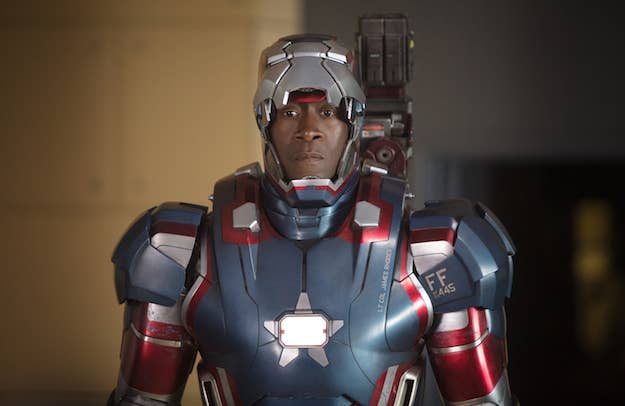
"The rule of comic book drawing, basically, [is that] the [body] proportions are generally eight heads tall," says Mahan. "The regular body is seven heads. By adding the extra length, it gives [the character] that heroic proportion and heroic stance." That works great for the suit alone — less so for the actor trying to fit into a suit that isn't proportionate to his body.
The solution: Drop the trousers.
"The actors wear the suits from just a little bit below their waist up," says Mahan. "We found that most of the shots were from the waist up, so why not dedicate the suits to be those kinds of shots?" There were physical legs that could snap into place for whenever a full body shot of Downey or Cheadle in their suits was necessary; otherwise, they were usually added in digitally in post-production.
For Iron Man 3, Mahan and MacGowan also strived to use lighter, softer material where possible for a more "actor-friendly" fit. "We actually scan [the bodies of] Robert and Don and the stunt performers as we're sculpting the suit digitally," says MacGowan. "We're always tweaking it to make sure that there's no collision with arms into the torso, so they're as comfortable as they can be."
Distress as you go
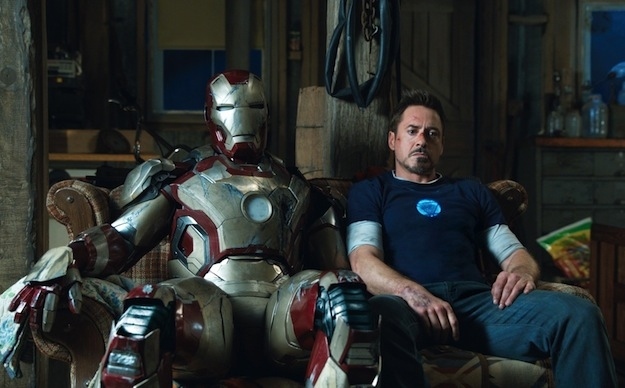
Tony Stark's Iron Man suits are rarely in pristine condition — all those battles and explosions take their toll. But thanks to Marvel's famed cost-conscious style of filmmaking, Mahan and MacGowan did not have a vast supply of suits to beat up.
"Luckily, the films have been shot rather in sequence," says Mahan. "We destruct them as they go." Mahan says one suit is kept in top condition, while just one or two others are swapped back and forth during production. "The [Mark] 42 starts very nice, but when [Tony] crashes in Tennessee, then you have a lot of damage and scratches and dents and cuts. It's basically us on location doing sketches and showing Shane Black, the director, what levels you want to take it to. And then we craft and cut and chew the suits up and paint them up on the spot there."
Batteries are included
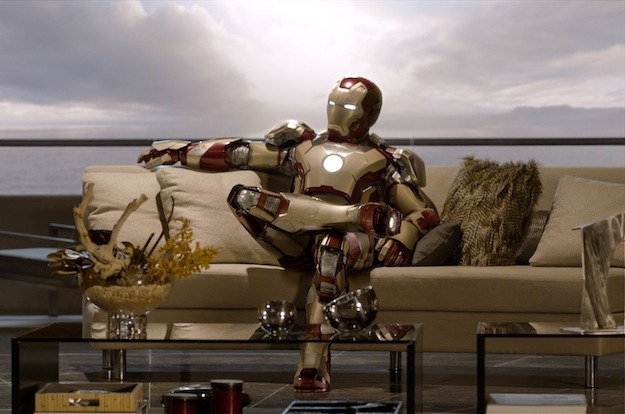
To manage the lights within the Iron Man suits — namely, the arc reactor in the chest and eye-slits in the helmet — Mahan and MacGowan placed them on remote dimmer switches. (It allows the cinematographers better control of the light levels within the scene.) Between those switches and the actors' bodies, there's not a lot of room for a battery to power the lights. "They're basically the strongest batteries we can find in a very small space," says Mahan.
So what kind of batteries are they?
"That's repulser technology, and that's special Tony Stark proprietary information," deadpans Mahar. "I'm sorry."
Ha! Special effects humor! Fantastic! But, seriously, are they AA? AAA? D cell?
"We actually make our own battery," says Mahar. "In one leg of Robert's suit, there's salt water, and there's copper wires in the other leg that runs up to a special power unit."
Mmmhmm. We're not going to get a straight answer here, are we?
"Nope."
Some secrets, it seems, will remain in Tony Stark's vault.
Go digital or go home

As teased in the film's trailer, Iron Man 3's final act involves dozens of iterations of Iron Men rocketing to the rescue. Those suits were all created digitally, zooming by the camera so fast audiences have barely been able to get a good look at them. Mahan and MacGowan did not work on those suits, but you can check them out in this closer look from the film's Facebook page, along with the nicknames Tony Stark gave them — including the standout "Igor" suit.
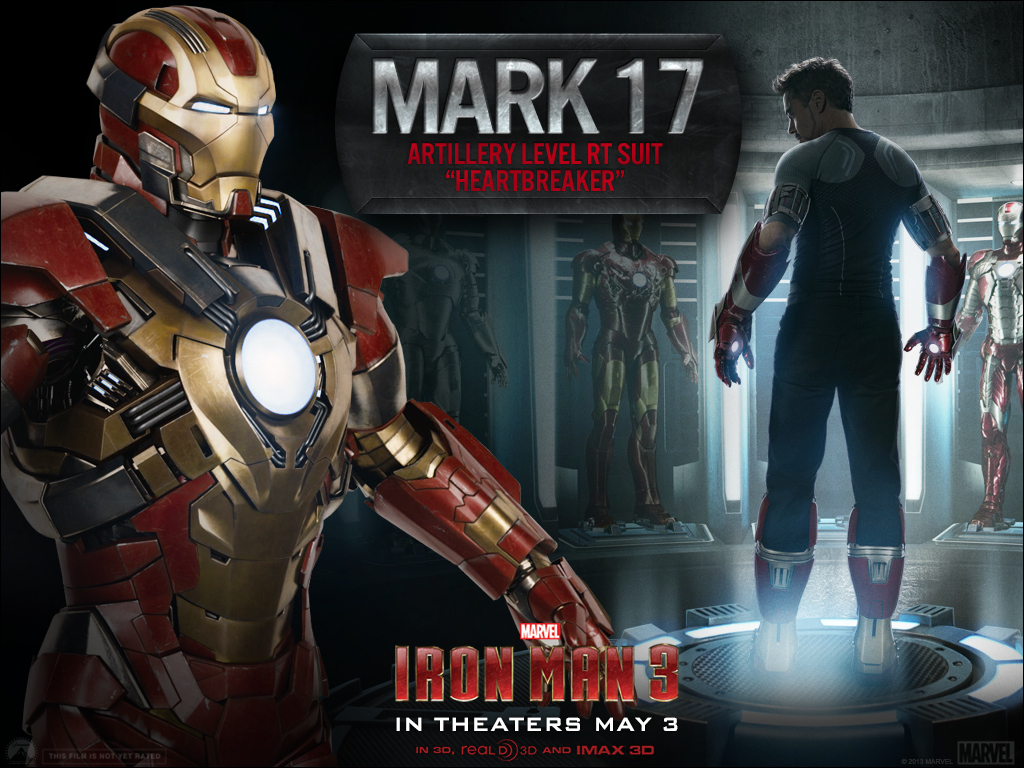
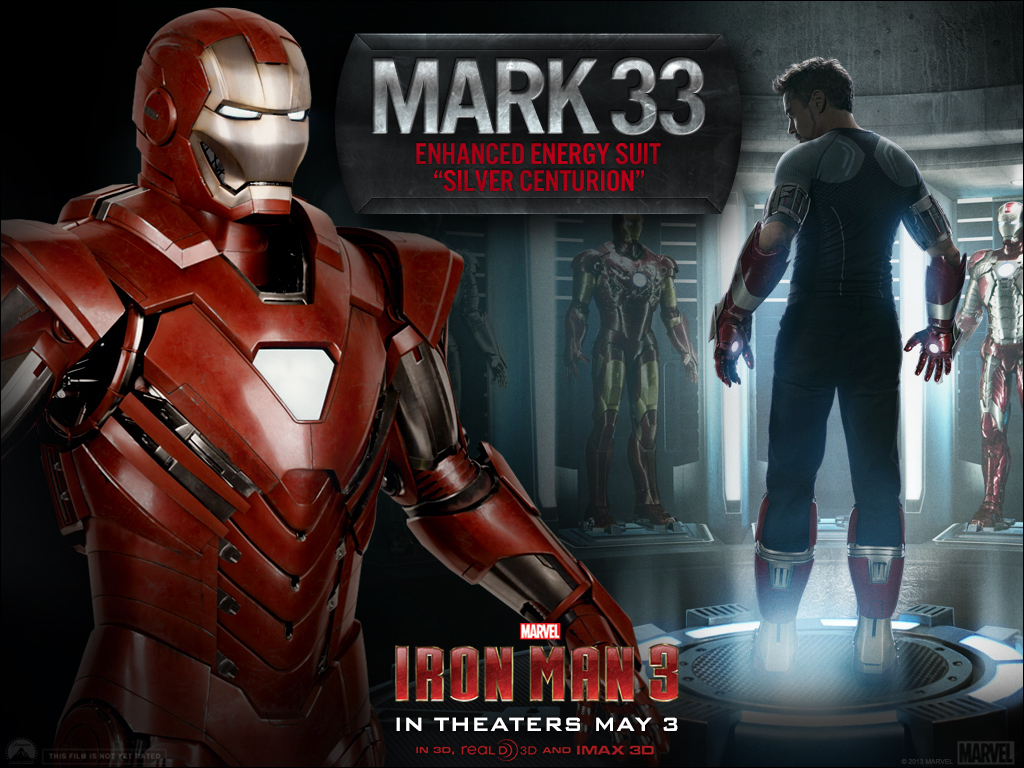
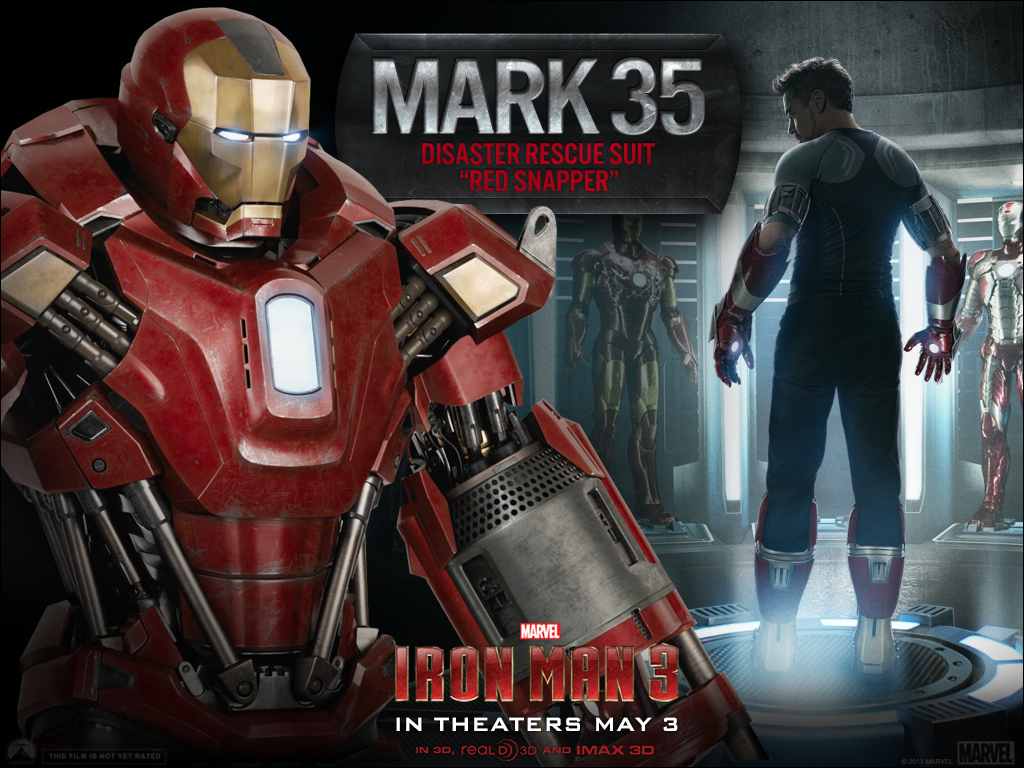
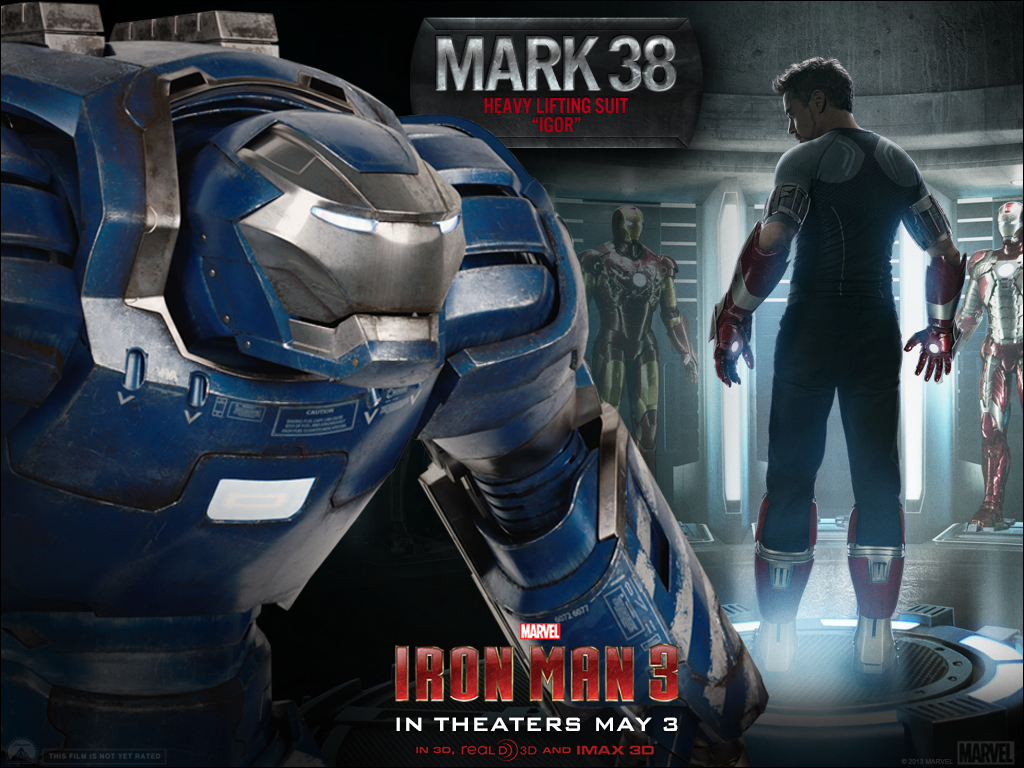
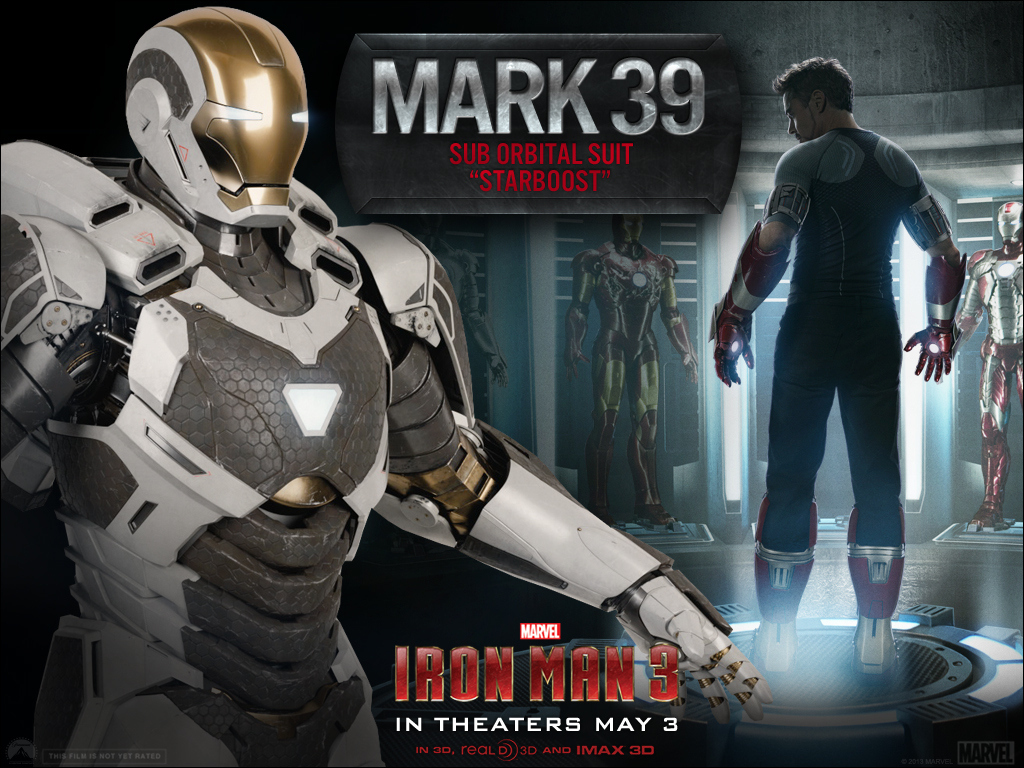
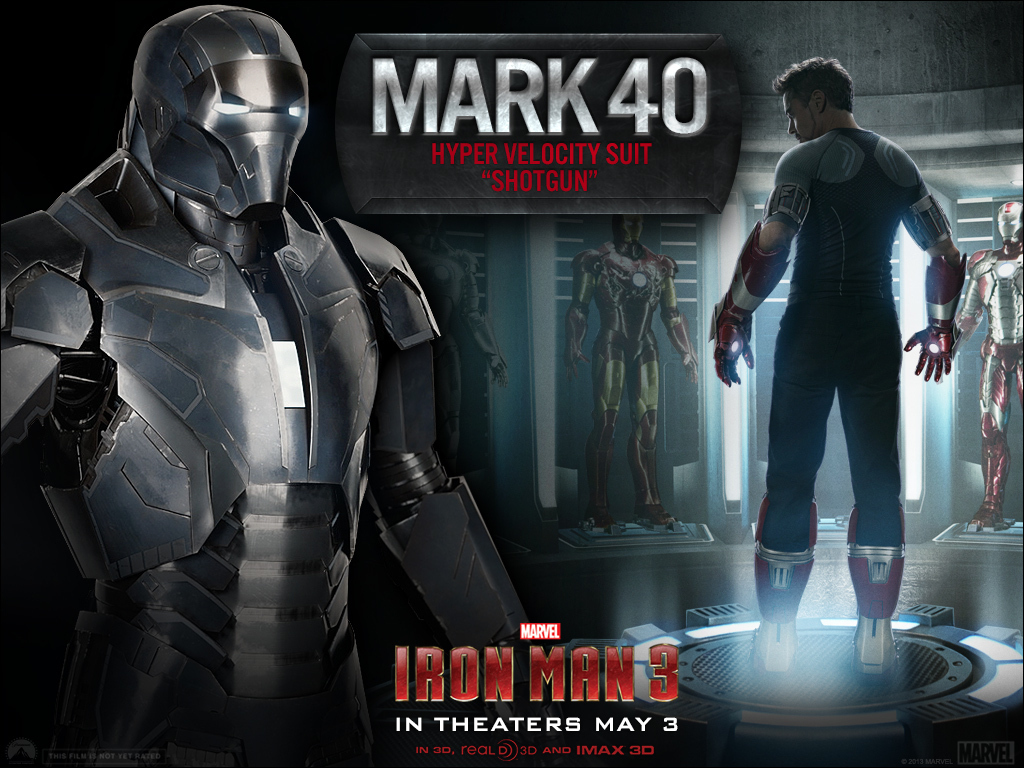
This story has been modified to make clear the preceding six images of the different Iron Man suits came from the film's Facebook page.
